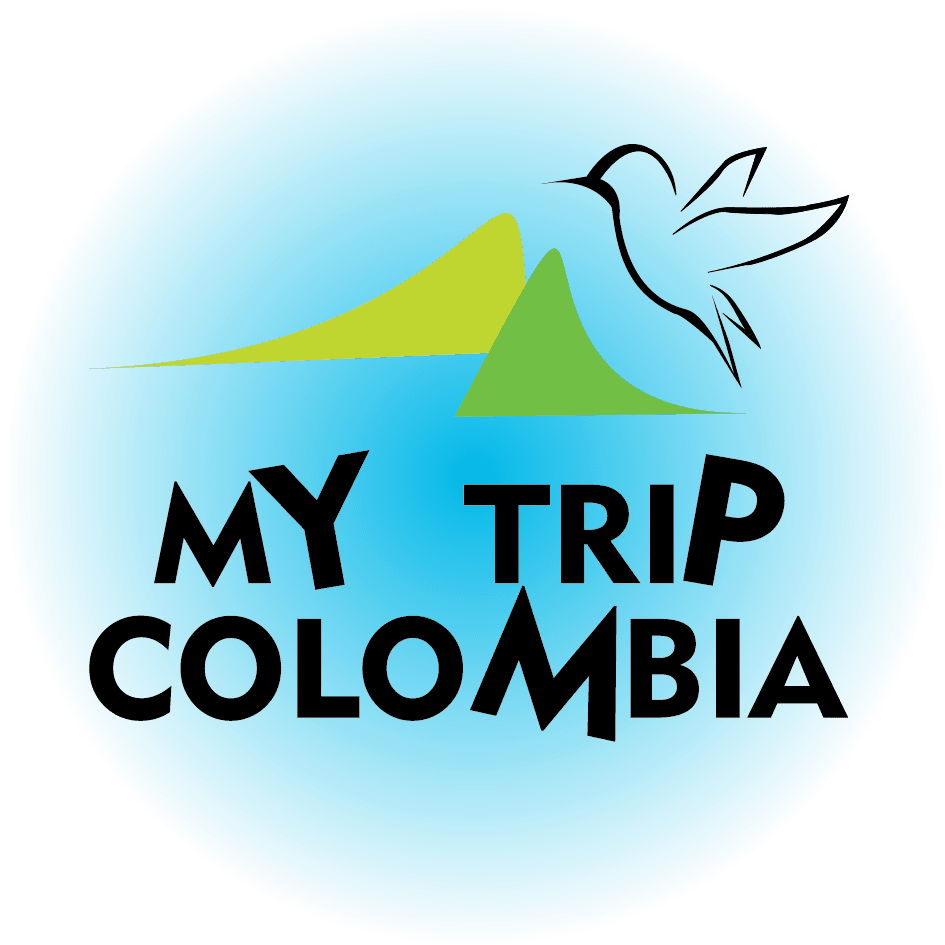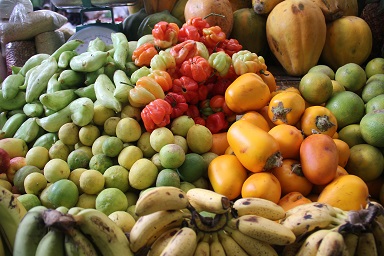DISCOVER THE BEST DISHES IN THE COLOMBIAN AMAZON
Why Visit the Colombian Amazon
The Amazon is one of the most beautiful destinations in all of Colombia, with stunning biodiversity, exotic wildlife, and unique Indigenous cultures. Colombia’s remote Amazon region is the perfect place to disconnect from the worries of everyday life and immerse yourself in nature. Go birdwatching and listen to the songs of exotic bird species, canoe down the world’s largest river, learn about the traditions and ancient wisdom of the local indigenous communities, and try some of the typical local gastronomy..
-
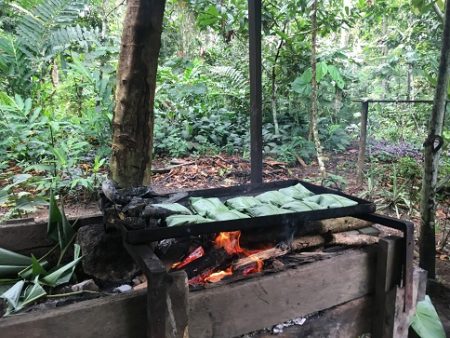
Traditional Food of the Colombian Amazon -
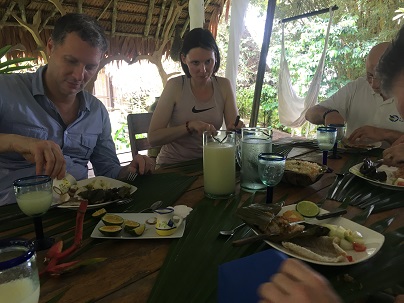
Lunch in the Amazon
Food in the Colombian Amazon: Exotic & Unique Cuisine
The Colombian Amazon is home to unique gastronomy, influenced by both local and international cuisines. Leticia (the largest Amazonian city in Colombia) can thank its cultural and gastronomic richness on its privileged location at the edge of a triple border with Peru and Brazil. Discover an exciting fusion of colors, flavors, ingredients, and cooking methods unique to Amazonian Indigenous communities such as the Ticunas. Home to some of the most exotic food in the country, Colombia’s Amazon has diverse gastronomic offerings, from giant river fish to exotic fruits to more unusual foods such as the mojojoy worm. In this article, we will discuss some of the standout dishes that you absolutely must try at least once in your lifetime…TYPICAL DISHES IN THE COLOMBIAN AMAZON
PATARASHCA:
The traditional Amazonian dish Patarashca is prepared by wrapping fish in the leaves of the Calathea lutea plant (often known as bijao) and slow cooking them on a grill. This tropical leaf infuses its flavor into the fish and traps the fish’s juices for a tasty dish. This ancestral cooking method of indigenous tradition is popular amongst the communities of the Amazon rainforest. The word patarashca comes from the Quechua language and means to ‘fold’ or ‘wrap’. Are you considering traveling to the Colombian Amazon for an amazing adventure where you can learn all about the local indigenous cultures and try the unique local food? Click here and explore some of our fantastic tour packages to the Amazon.ARROZ CHAUFA (PERUVIAN FRIED RICE):
Arroz Chaufa is Peru’s version of Chinese fried rice, made with rice, vegetables, stir-fried meats, and Peruvian soy sauce (which gives it a unique and rich flavor). This delicious fusion-style recipe was influenced by the influx of Chinese immigrants to Peru in the 1800s. Its name is derived from the Chinese word “chaufan”, which means “fried rice” in Cantonese. This typical dish is commonly found in the Amazon and is a must-try on your visit to Colombia. Peru is one of the world’s top culinary destinations, and what better way to try some of the countries amazing cuisine than in a beautiful natural paradise.QUIÑAPIRA & AJICERO: SOUPS OF THE COLOMBIAN AMAZON:
If you have managed to read any of our other food blog posts, you will already know that soup is commonly eaten throughout Colombia (link), and the Amazon is no exception! Quiñapira & ajicero are traditional fish soups made with broth, freshwater fish, and the seeds of spicy peppers. The fish is cooked in boiling water with the chili seeds, resulting in a fresh and lightly spicy broth. It is often served with casaba, a type of crispy flatbread made from cassava root. Ajicero is typical to the Colombian Amazon department of Guainia, and quiñapira is traditional to the lesser-visited Amazon department of Vaupes. Although these delicious chili broths are very similar in both regions, the fish and spicy peppers often vary.Did you know that the gastronomy of the Colombian Amazon is famous for using lots of chilies? Many of the local indigenous communities proudly preserve their gastronomic roots, welcoming thousands of tourists to try their delicious & fiery food every year.
Picarurú – The Picaruru (Arapaima gigas) is the king of freshwater fish, measuring up to three meters long and often weighing more than 200 kilograms. Despite its large size, this scaly fish is surprisingly tender and tasty, with one fish capable of feeding many mouths.
Piranha – These ancient and opportunistic carnivores are perhaps a little misunderstood. Compared to the picaruru, piranhas are relatively small, ranging from around 5-14 inches, but their reputation as a predator makes them one of the most feared fishes in the world. In reality, humans are not a typical part of a piranha’s diet and although the occasional unlucky person might end up being nibbled on, it is much more common for us to eat them. These freshwater fish are surprisingly delicious and highly nutritious. Many jungle tours include time for piranha fishing, and if you catch some decent-sized piranhas, you can take them back and cook them up. They taste particularly good when fried!
Stuffed Gamitana – The gamitana fish (Colossoma macropomum) is a close relative of the flesh-eating piranha and one of the most important commercial fish in the region (thanks to its tasty flesh!). The large bass-like fish can weigh up to 100 pounds, and although a juvenile gamitana is easy to confuse with their piranha relatives, they are primarily vegetarian – mostly feeding on fruit and seeds. These freshwater fish are important to local ecosystems as they swallow many seeds whole, helping to disperse them throughout the river network. This delicious Amazon river fish is often stuffed with vegetables and shrimp.-
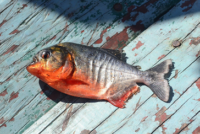
Piranha, Colombian Amazon -
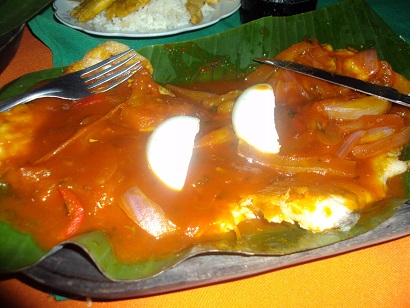
Amazonian Fish
Visit the Colombian Amazon try these exotic and delicious Colombian fish for yourself. Adventure in the jungle and explore the longest and widest river in the world, The Amazon River!
Do you want to learn how to cook the traditional food of the Colombian Amazon? Take a class with us deep in the jungle and create unforgettable memories.
-
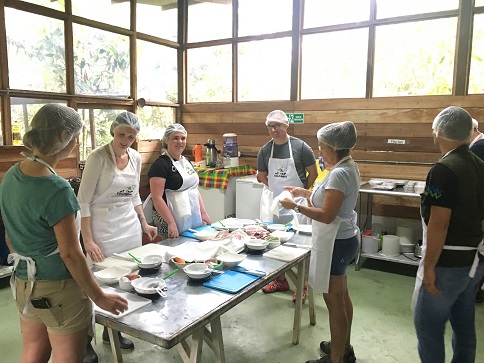
Cooking Class in the Amazon with My Trip Colombia -
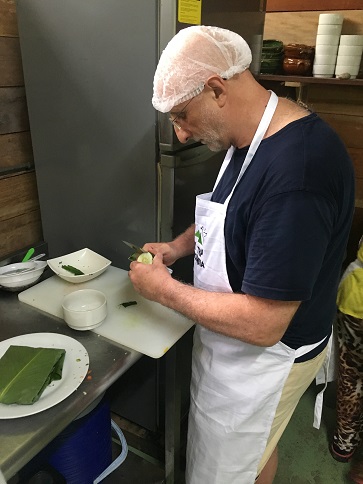
Cooking Class in the Amazon with My Trip Colombia -
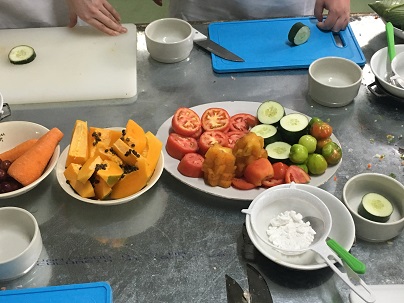
Ingredients for the Cooking Class with My Trip Colombia
Discover our tour packages and customize an all-inclusive trip to the Amazon in Colombia and explore one of the greatest natural wonders in the world!
Explore our Tours of the Colombian Amazon
SIDE DISHES & OTHER ACCOMPANIMENTS IN COLOMBIAN AMAZON FOOD
CASABE:
This typical flatbread is one of the most typical dishes in the Amazon. It is a crispy dough made from wild cassava (yuca) and is often served with fish, soup, and other main dishes. Cassava root is actually poisonous in its natural form, so it must be washed and processed using a traditional technique. In the northeastern Colombian Amazon, cassava forms part of the daily diet for many indigenous people. Versions of casabe have been eaten for centuries, and the traditional preparation method is a reminder of the families who worked every day with a machete in hand to preserve this ancestral tradition.MOJOJOY WORM:
The mojojoy is one of the most iconic and exotic dishes of the Colombian Amazon. These plump worm larvae can be eaten raw (and alive) but are usually fried or roasted on a skewer and accompanied by vegetables or plantains. This local delicacy can also be filled with beef or chicken. The larvae form part of the diet of many local Indigenous communities and are considered a highly nutritious superfood, rich in protein, minerals, and fatty acids. They are an acquired taste, but an absolute must-try on any trip to the Colombian Amazon! Have you eaten them yet? Let us know in the comments section below.FARIÑA:
Fariña, a flour made from yuca (cassava), is another one of the most typical foods of the Colombian Amazon. The root vegetable is grated, fermented in water, drained, and toasted to form a simple flour-like dough. It is often served with soups or broths, or simply eaten alone as a snack. It is one of the most eaten foods amongst the indigenous communities of the Colombian Amazon, simple yet delicious.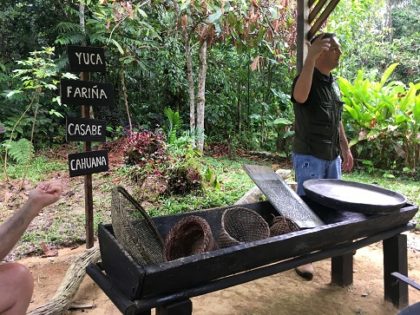
TUCUPÍ:
The Colombian Amazon is one of the best places to find spicy sauces in all the country. This thick black sauce, made from yucca and black chili peppers, has a delicious earthy flavor. Tucupí is used to add flavor to stews, as a marinade for meats and fish, and as a dip for cassava bread. This ancestral sauce is the best in the Amazon, and not one to miss if you like to add a little heat to your food.CREMA DE COPOAZÚ (COPOAZÚ JUICE):
Copoazú (Theobroma grandiflora) is one of the many delicious Amazon fruits you can find in and near the Colombian jungle. A close relative of cacao, this nutritious fruit tastes great in juices or eaten raw, but our favorite way to eat it is in crema. The fruit pulp is blended with condensed milk and cream for a sweet and delicious Amazonian dessert.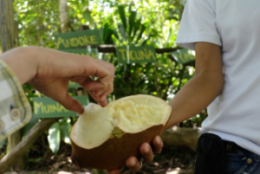
Did you know that the name translates to “food of the gods”? Theos = god, broma = food. This divine exotic fruit is delicious and contributes to heart health.
“Do you want to discover the best restaurants in the Colombian Amazon? Contact MyTripColombia and we will help you create a tailor-made trip to Colombia so that you can enjoy the best food in the Colombian Amazon”
”
Create a tailor-made trip to the Colombian Amazon
AMAZONIAN FRUITS
The Amazonian pineapple is smaller than the pineapple you will find in the Andean region of Colombia, but what they lack in size they make up for in taste! These delicious pineapples are sweet, juicy, and have a subtle mango-like flavor. You can find these fruits sold by one of the many street vendors in the departments of Guaviare and Caquetá.
-
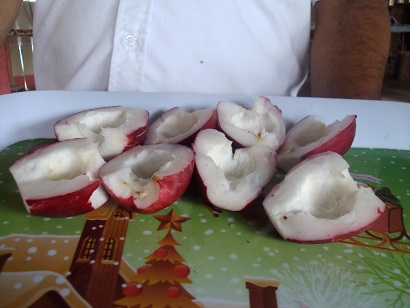
Araza Fruit
Are you feeling inspired to try some of the rare, exotic, and unique dishes of the Colombian Amazon? Contact MyTripColombia for more information to explore this breathtaking region and the lungs of our planet earth.
My Trip Colombia’s expert advisors can help you create the perfect plan for exploring the Colombian Amazona. We have over 30 years of experience creating tour packages and are previous winners of the tourism quality and sustainability award. Come and experience an unforgettable adventure in the Colombian Rainforest!
Explore our Tours of the Colombian Amazon
SIDE DISHES & OTHER ACCOMPANIMENTS IN COLOMBIAN AMAZON FOOD
CASABE:
This typical flatbread is one of the most typical dishes in the Amazon. It is a crispy dough made from wild cassava (yuca) and is often served with fish, soup, and other main dishes. Cassava root is actually poisonous in its natural form, so it must be washed and processed using a traditional technique. In the northeastern Colombian Amazon, cassava forms part of the daily diet for many indigenous people. Versions of casabe have been eaten for centuries, and the traditional preparation method is a reminder of the families who worked every day with a machete in hand to preserve this ancestral tradition.MOJOJOY WORM:
The mojojoy is one of the most iconic and exotic dishes of the Colombian Amazon. These plump worm larvae can be eaten raw (and alive) but are usually fried or roasted on a skewer and accompanied by vegetables or plantains. This local delicacy can also be filled with beef or chicken. The larvae form part of the diet of many local Indigenous communities and are considered a highly nutritious superfood, rich in protein, minerals, and fatty acids. They are an acquired taste, but an absolute must-try on any trip to the Colombian Amazon! Have you eaten them yet? Let us know in the comments section below.FARIÑA:
Fariña, a flour made from yuca (cassava), is another one of the most typical foods of the Colombian Amazon. The root vegetable is grated, fermented in water, drained, and toasted to form a simple flour-like dough. It is often served with soups or broths, or simply eaten alone as a snack. It is one of the most eaten foods amongst the indigenous communities of the Colombian Amazon, simple yet delicious.
TUCUPÍ:
The Colombian Amazon is one of the best places to find spicy sauces in all the country. This thick black sauce, made from yucca and black chili peppers, has a delicious earthy flavor. Tucupí is used to add flavor to stews, as a marinade for meats and fish, and as a dip for cassava bread. This ancestral sauce is the best in the Amazon, and not one to miss if you like to add a little heat to your food.CREMA DE COPOAZÚ (COPOAZÚ JUICE):
Copoazú (Theobroma grandiflora) is one of the many delicious Amazon fruits you can find in and near the Colombian jungle. A close relative of cacao, this nutritious fruit tastes great in juices or eaten raw, but our favorite way to eat it is in crema. The fruit pulp is blended with condensed milk and cream for a sweet and delicious Amazonian dessert.
Did you know that the name translates to “food of the gods”? Theos = god, broma = food. This divine exotic fruit is delicious and contributes to heart health.
“Do you want to discover the best restaurants in the Colombian Amazon? Contact MyTripColombia and we will help you create a tailor-made trip to Colombia so that you can enjoy the best food in the Colombian Amazon”
”
Create a tailor-made trip to the Colombian Amazon
AMAZONIAN FRUITS
The Amazonian pineapple is smaller than the pineapple you will find in the Andean region of Colombia, but what they lack in size they make up for in taste! These delicious pineapples are sweet, juicy, and have a subtle mango-like flavor. You can find these fruits sold by one of the many street vendors in the departments of Guaviare and Caquetá.
-

Araza Fruit
Are you feeling inspired to try some of the rare, exotic, and unique dishes of the Colombian Amazon? Contact MyTripColombia for more information to explore this breathtaking region and the lungs of our planet earth.
My Trip Colombia’s expert advisors can help you create the perfect plan for exploring the Colombian Amazona. We have over 30 years of experience creating tour packages and are previous winners of the tourism quality and sustainability award. Come and experience an unforgettable adventure in the Colombian Rainforest!

